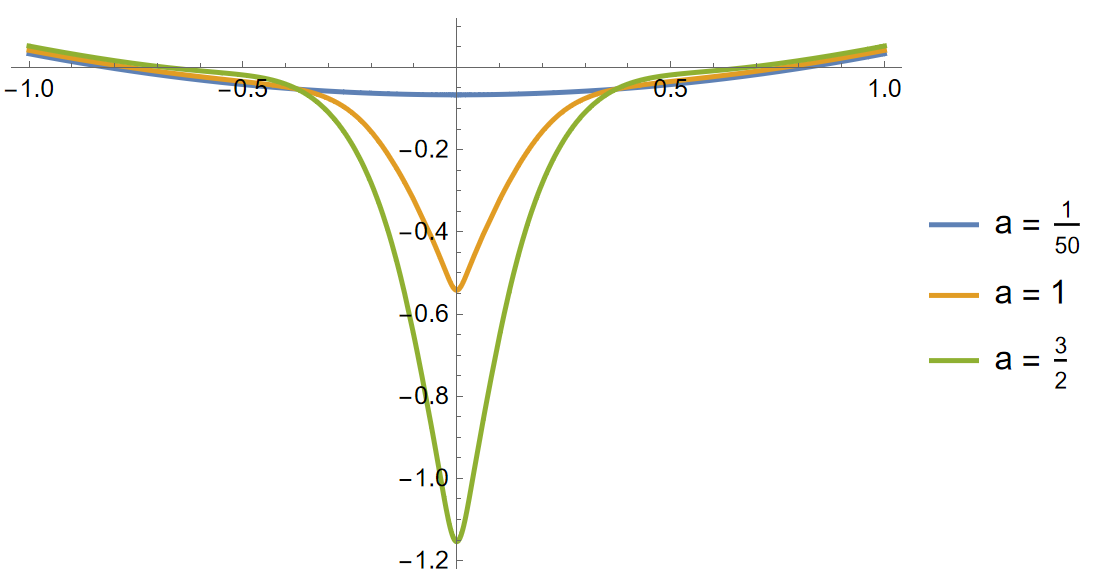I would like to be able to evaluate, numerically, the function $f(n, a, w)$ shown below so that I can:
integrate $f(n, a, w)$ over the range $[0 \le p \le 1]$ for various positive integer $n < 50$ real $0 < a < 5$ (I'm particularly interested in the range $1/50 < a < 3/2$ );
graphically explore the relationship between the value of the integral and $w$ for the those same values of $n$ and $a$;
estimate, within about $0.005$, the value of $w$ that minimizes the integral for the same $n$ and $a$.
I have more experience with Mathematica's symbolic capabilities than with the numerical side . Given the oscillatory nature of $f$, and the infinite sums (which are fortunately moderated by the fact that the negative exponential is going to decay rapidly), I'd appreciate guidance as to the overall approach (in terms of functions and options) to ensure the accuracy I'm looking for.
Function
$$ \begin{align} f(n, a, w) &= \frac{1}{n} \left(w^2+\frac{a^2}{12}+4 \sum _{k=1}^{\infty } \left((-1)^k \exp \left(-\frac{2 k^2 \pi ^2 w^2}{a^2}\right) \left(w^2+\frac{a^2}{4 k^2 \pi ^2}\right) \cos \left(\frac{2 \pi p k}{a}\right)-\frac{a^2}{\pi ^2} S^2\right)\right) \\ &-\left(p+\frac{a}{\pi } S \right)^2-\frac{2 p }{n} \left(p+\frac{a S}{\pi }\right)+p^2 \end{align} $$
where $$ S = \sum _{j=1}^{\infty } \frac{(-1)^j }{j} \: \exp \left(-\frac{2 j^2 \pi ^2 w^2}{a^2}\right) \sin \left(\frac{2 j \pi p}{a}\right) $$
Mathematica code
F[n_, a_, w_] := (1/n) * (w^2 + a^2/12 + 4 * Sum[(-1)^k * Exp[-((2 * k^2 * Pi^2 * w^2)/a^2)] * (w^2 + a^2/(4 * k^2 * Pi^2)) * Cos[(2 * Pi * p * k)/a] - (a^2/Pi^2) * S^2, {k, 1, Infinity}]) - (p + (a/Pi) * S)^2 - ((2 * p)/ n) * (p + (a/Pi) * S) + p^2
with
S = Sum[((-1)^j/j) * Exp[-((2 * j^2 * Pi^2 * w^2)/a^2)] * Sin[(2 * j * Pi * p)/a],{j, 1, Infinity}]
Edited: Following the suggestion of @Bill, I have changed the variable of summation in $S$ to $j$ for the sake of clarity.


kas your iterator in bothSumCould you change one of those toj? After that could you perhaps tackle a possibly simpler problem and try to get an accurate numerical approximation for just yourS? That might show you a few things and possibly make it easier to find your largerSum$\endgroup$